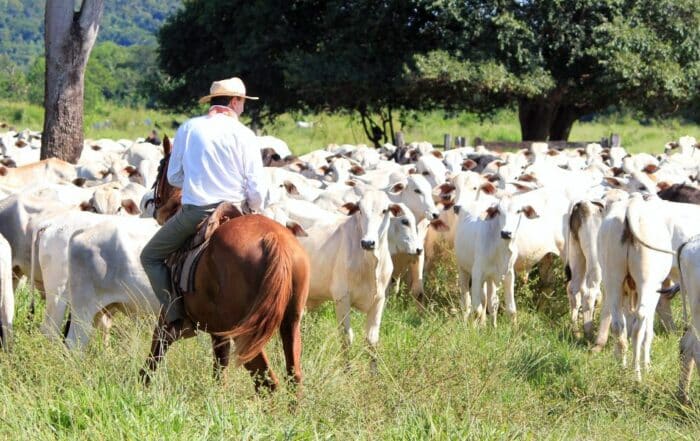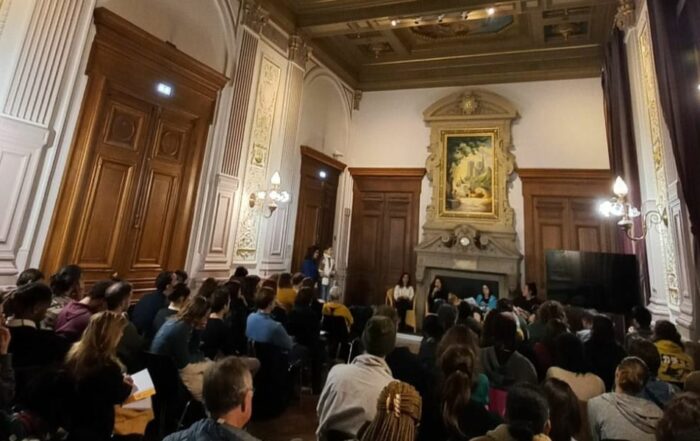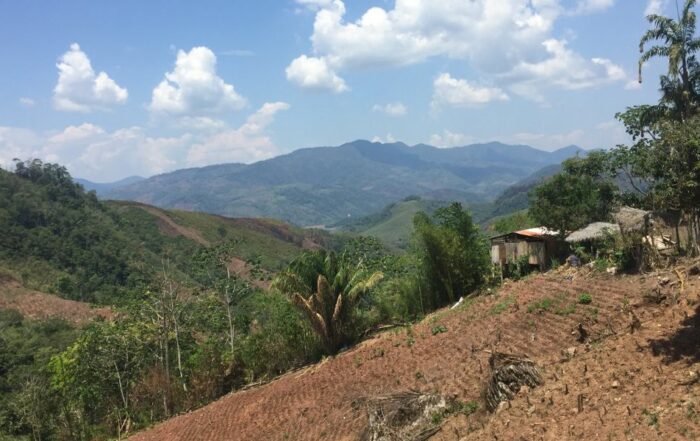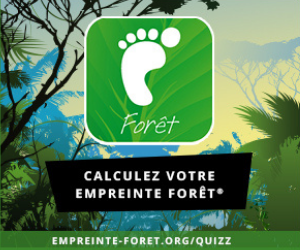2025.06.26 Preparation of the support for the sapote leaf sample, Pampa Azangaro © Envol Vert
In Pichanaki, we continue to realize activities to increase farmers’ capacity and interest in forest conservation.
Through economic alternatives developed together with farmers, Envol Vert wants to generate extra and sustainable income for farmers. The goal is also to show that trees aren’t just useful from a technical point of view (like providing shade in agroforestry coffee systems), but can also be a real source of income.
The forest seed network is one of these economic alternatives. As explained in the April article, this network allows producers to see their trees not only as wood, which they can exploit when they need money, but as a real long-term alternative that can motivate them to conserve their forests.
Concrete measures are already taking place
On Thursday, June 26, in Pichanaki, we went on a visit with INIA (National Institute of Agricultural Innovation) to collect botanical samples from seed trees. This visits with this partner are key for Envol Vert, as they allow us to correctly identify tree species and ensure the quality of the seeds that will later be sold to potential customers.
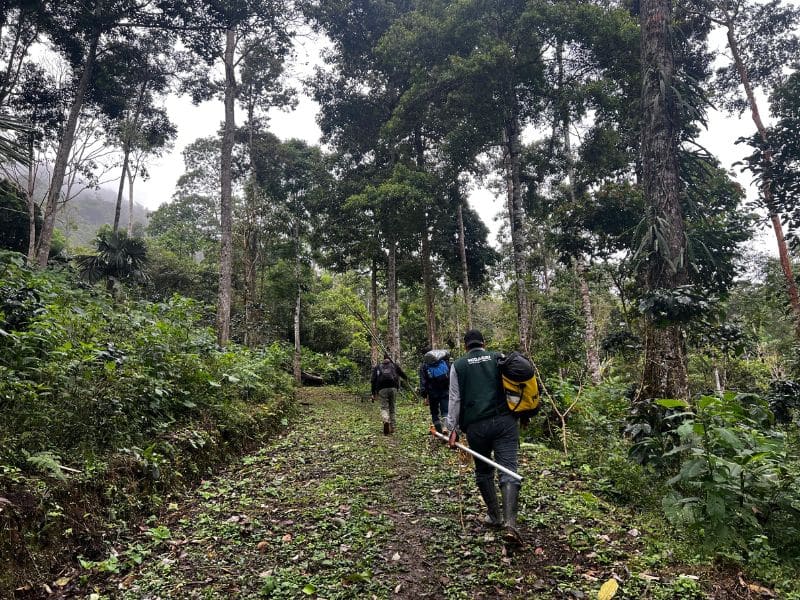
2025.06.26 The team walking through the farm of Mr. Jesús Gamarra Pino, Pampa Azangaro © Envol Vert
How to collect botanical samples?
This process involves several steps:
The first step is to go to collect data such as altitude, tree condition, color and texture, smell of the wood, sap, roots… all of this helps to identify the species. For example, on this trip, we went to the town of Pampa Azangaro to work with two farmers.
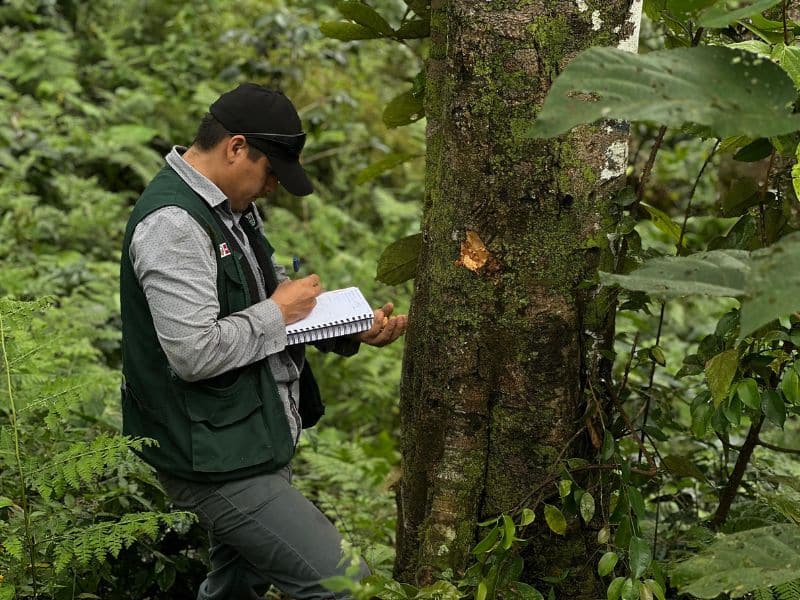
2025.06.26 Engineer Luis García from INIA collecting data on bark, Pampa Azangaro © Envol Vert

2025.06.26 Data collection in a notebook, Pampa Azangaro © Envol Vert
Then, the botanical samples are collected. Sometimes it is necessary to climb trees, which can reach tens of meters in height, which may seem difficult, but with the right equipment and a little practice, it is easy. This technique guarantees the quality and traceability of the samples. If it is not possible to climb, samples are collected nearby, ensuring that they belong to the correct tree.
The next step occurs in the laboratory. INIA engineers analyze the samples and confirm the identity of the species. Once the species have been validated, we start the collective collection of those seeds.
Botanical sampling is an essential process that allows us to precisely identify the species and quality of the seeds. The sustainable use of forest seeds increases the role of producers in their efforts to conserve the forest and diversify their income.
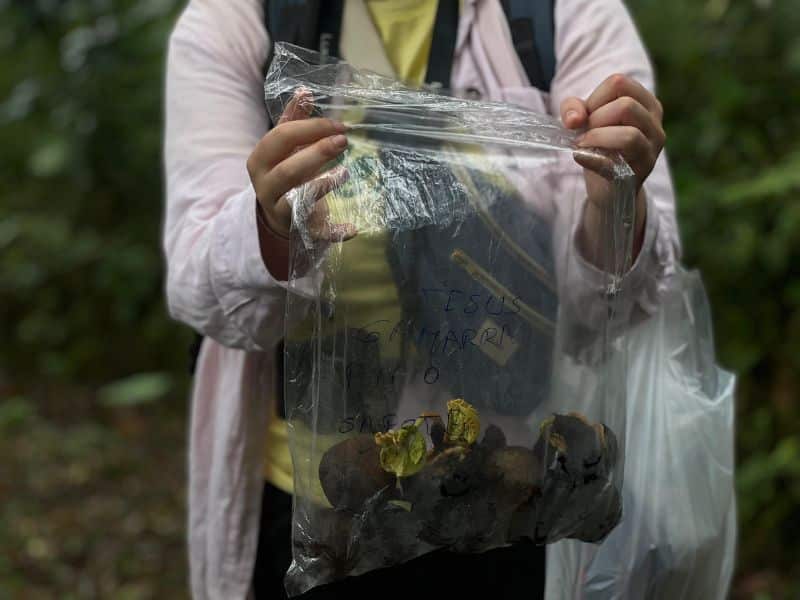
2025.06.26 Sample of sapote seeds, Pampa Azangaro © Envol Vert
2025.06.26 Preparation of the support for the sapote leaf sample, Pampa Azangaro © Envol Vert
In Pichanaki, we continue to realize activities to increase farmers’ capacity and interest in forest conservation.
Through economic alternatives developed together with farmers, Envol Vert wants to generate extra and sustainable income for farmers. The goal is also to show that trees aren’t just useful from a technical point of view (like providing shade in agroforestry coffee systems), but can also be a real source of income.
The forest seed network is one of these economic alternatives. As explained in the April article, this network allows producers to see their trees not only as wood, which they can exploit when they need money, but as a real long-term alternative that can motivate them to conserve their forests.
Concrete measures are already taking place
On Thursday, June 26, in Pichanaki, we went on a visit with INIA (National Institute of Agricultural Innovation) to collect botanical samples from seed trees. This visits with this partner are key for Envol Vert, as they allow us to correctly identify tree species and ensure the quality of the seeds that will later be sold to potential customers.

2025.06.26 The team walking through the farm of Mr. Jesús Gamarra Pino, Pampa Azangaro © Envol Vert
How to collect botanical samples?
This process involves several steps:
The first step is to go to collect data such as altitude, tree condition, color and texture, smell of the wood, sap, roots… all of this helps to identify the species. For example, on this trip, we went to the town of Pampa Azangaro to work with two farmers.

2025.06.26 Engineer Luis García from INIA collecting data on bark, Pampa Azangaro © Envol Vert

2025.06.26 Data collection in a notebook, Pampa Azangaro © Envol Vert
Then, the botanical samples are collected. Sometimes it is necessary to climb trees, which can reach tens of meters in height, which may seem difficult, but with the right equipment and a little practice, it is easy. This technique guarantees the quality and traceability of the samples. If it is not possible to climb, samples are collected nearby, ensuring that they belong to the correct tree.
The next step occurs in the laboratory. INIA engineers analyze the samples and confirm the identity of the species. Once the species have been validated, we start the collective collection of those seeds.
Botanical sampling is an essential process that allows us to precisely identify the species and quality of the seeds. The sustainable use of forest seeds increases the role of producers in their efforts to conserve the forest and diversify their income.

2025.06.26 Sample of sapote seeds, Pampa Azangaro © Envol Vert


